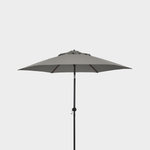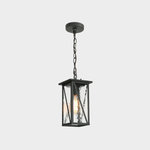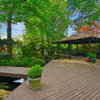Herons at my pond
15 years ago
Featured Answer
Sort by:Oldest
Comments (13)
- 15 years ago
Related Professionals
Surprise Landscape Architects & Landscape Designers · Ferndale Landscape Architects & Landscape Designers · Horsham Landscape Architects & Landscape Designers · Lakewood Landscape Architects & Landscape Designers · Rancho Palos Verdes Landscape Architects & Landscape Designers · Centereach Landscape Contractors · East Chicago Landscape Contractors · Hoover Landscape Contractors · Pahrump Landscape Contractors · Paso Robles Landscape Contractors · Pleasant Prairie Landscape Contractors · Ronkonkoma Landscape Contractors · Welby Landscape Contractors · West Chicago Landscape Contractors · Shafter Landscape Contractors- 15 years ago
- 15 years ago
- 15 years ago
- 15 years ago
- 15 years ago
- 15 years ago
- 15 years ago
- last year
- last year
- last year
- 6 months ago
Related Stories

GARDENING AND LANDSCAPINGHow to Make a Pond
You can make an outdoor fish paradise of your own, for less than you might think. But you'll need this expert design wisdom
Full Story
LANDSCAPE DESIGNKoi Find Friendly Shores in Any Garden Style
A pond full of colorful koi can be a delightful addition to just about any landscape or garden
Full Story
LANDSCAPE DESIGNNatural Swimming Pools: More Beauty, No Chemicals
Keep your skin and the environment healthy with a pool that cleans itself, naturally
Full Story
HOUZZ TVHouzz TV: Color-Happy Country Living in Fort Worth
See how this family’s Texas-sized home celebrates its whimsical, collected style through vibrant textiles and graphic patterns
Full Story
PETSPet-Proofing Your Home: A Room-by-Room Guide
Not all pet dangers are obvious. Keep furry friends safe and sound by handling all of these potential hazards
Full Story
GARDENING FOR BUTTERFLIESA Quick-Start Guide to Bird-Watching for Fun and Learning
Set out some seed and grab your field guide. Bird-watching is an easy, entertaining and educational activity for the whole family
Full Story
FEEL-GOOD HOMEWhat Really Makes Us Happy at Home? Find Out From a New Houzz Survey
Great design has a powerful impact on our happiness in our homes. So do good cooking smells, family conversations and, yes, big-screen TVs
Full Story
GARDENING AND LANDSCAPINGBe a Citizen Scientist to Help Wildlife, Learn and Have Fun Too
Track butterflies, study birds, capture stars ... when you aid monitoring efforts, you’re lending Mother Nature a hand
Full Story
ARCHITECTUREWant to Live by the Water? What You Need to Know
Waterside homes can have amazing charm, but you'll have to weather design restrictions, codes and surveys
Full Story
GARDENING AND LANDSCAPING30 Dream Decks for Lounge Lovers
Magical settings and dazzling views create decks that are so dreamy, you won't want to leave
Full Story









kalevi